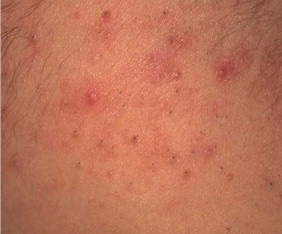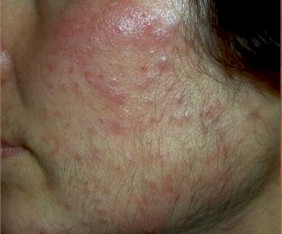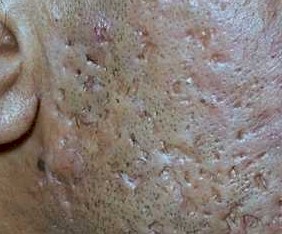
WELCOME TO ACNE GROUP ORG
THE ACNE GROUP is dedicated to providing accurate, reliable information on the treatment of acne, acne skin care and eliminating acne. Believe it or not, acne IS a skin disorder! Everyone seems to have acne and everyone seems to suffer from it.
- 1) Abnormal blocking of the sweat and hair follicle caused by too much androgen production in teenagers and by stress in those with adult acne.
- 2) A greater production of oil by the sebaceous glands.
- 3)And the abundance of common bacteria that all humans have.
ACNE RELATED SKIN CONDITIONS:
1)Rosacea: Acne and rosacea are two unrelated skin conditions. However, the two do co-exist together on the patients skin just as acne and psoriasis or acne and eczema and many other skin conditions that also appear together. Adult acne and rosacea are often seen on approximately 80% of patients and varies from mild to severe acne. Rosacea and acne are quite different as rosacea is a red face in the mild forms and has many stages. However, acne is red pus filled bumps that vary from mild to severe.
Clogged skin pores and bacterial infections cause acne. The blackheads, whiteheads and pimples are all different forms of acne and sometimes appear with rosacea or combined skin disorders appearing at the same time. Rosacea consists of red bumps called papules. The papules and pustules that occur in rosacea may look like typical acne, but closer observation by a trained physician reveals the absence of whiteheads and blackheads. In rosacea, the pimples and cysts rarely appear on the chest and back.
2)Seborrheic Dermatitis: Seborrheic dermatitis is very painful sensitive skin when on the face. When it is on the scalp it is called dandruff and had little or no pain as the scalp has very few pain sensors or nerve endings. Many people bump their heads for years with very little problem. Seborrheic dermatitis is an itch red area on the facial skin and on other places of the body. Most often, seborrheic dermatitis is on the facial area along with rosacea. It involves overactive sebaceous glands and scaly flaky skin. Whereas, the scaling skin on the eyelids of ocular rosacea.
is sometimes confused with it.Pictures are shown as follows to illustrate the severe skin conditions:

ACNE COMEDONICA

ACNE VULGARIS

ACNE SCARRING
Look further into the Acne Group for more information on acne, acne treatments, the cause of acne, etc.
Article of the Week:
Home Remedy for AcneThe tendency to develop acne is inherited. Although acne cannot be prevented, careful cleanliness can help to lessen the effects. Clean the skin gently but thoroughly with soap and water to remove dirt or make-up. When cleansing the skin, use a clean cloth to gently open the pores and dry the face with another clean towel to prevent bacterial re-infection. Use steam or warm, moist compresses to open up clogged pores. Limited use of topical astringents can remove excess oil; too much astringent will cause a worsening of the acne. Don't squeeze, scratch, pick, or rub lesions. These activities can increase skin damage. Wash your hands before and after caring for skin lesions to reduce the chance of infection. Identify and avoid anything that aggravates your acne. This may include oily foods, lotions, make-up, and so on. Avoid greasy cosmetics or creams, which can aggravate acne. Stress can add to the acne problem.
Site Map